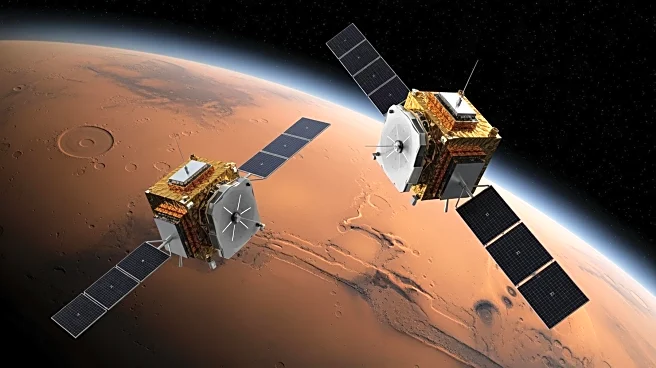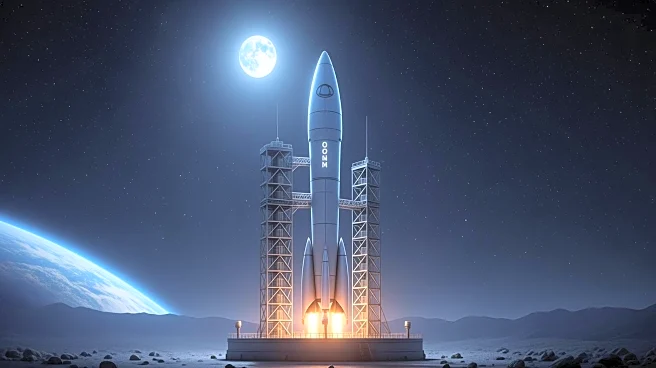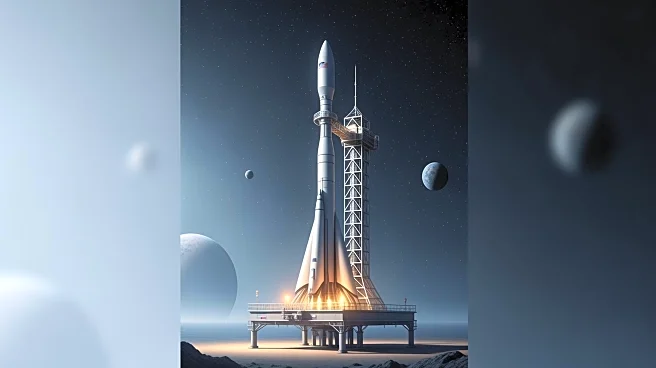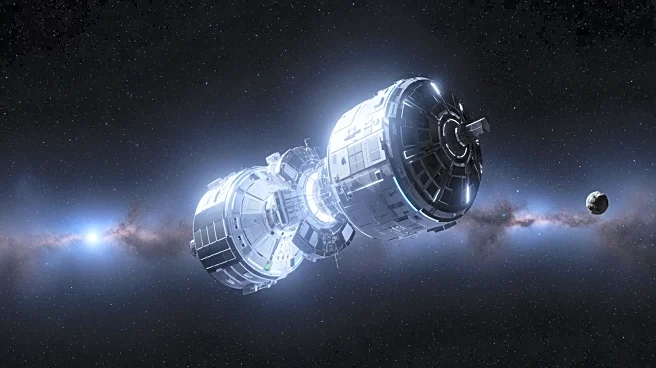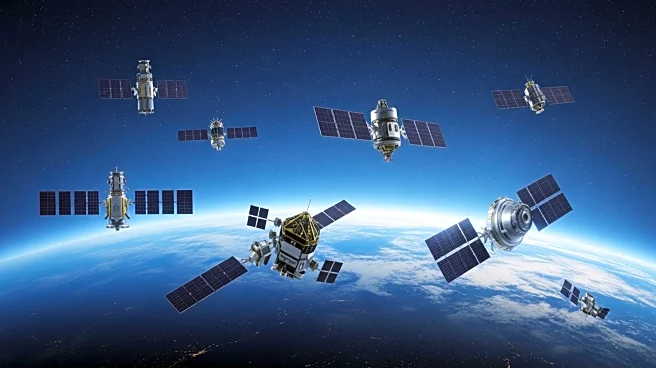What's Happening?
NASA is set to launch the ESCAPADE mission, consisting of two identical satellites, to study how Mars lost its thick atmosphere and liquid water. Scheduled for liftoff on November 9, 2025, aboard Blue
Origin's New Glenn rocket from Cape Canaveral, Florida, the $80 million mission aims to provide a 3D view of how the solar wind affects Martian air. The satellites, named Blue and Gold, will orbit Mars in tandem, marking NASA's first dual-satellite mission to another planet. The mission seeks to understand the solar wind's role in atmospheric escape, a crucial aspect of Mars' climate evolution. The satellites will reach Mars in September 2027 and spend about seven months adjusting their orbits before conducting joint observations. They will then separate into different orbits to map the interaction between Mars and the solar wind.
Why It's Important?
The ESCAPADE mission is significant as it could provide insights into Mars' transformation from a potentially habitable planet to its current state as a frozen desert. Understanding the solar wind's impact on Mars' atmosphere could inform future exploration and potential human settlement. The mission's findings may also reveal whether liquid water remains underground, a critical factor for future human exploration. Additionally, the mission tests a new route to Mars, potentially making future missions less dependent on specific launch windows. The data collected could aid in communication and navigation for future explorers by mapping Mars' ionosphere.
What's Next?
Following the launch, the ESCAPADE satellites will travel to Mars, arriving in September 2027. They will spend several months fine-tuning their orbits before beginning their scientific observations. The mission will explore Mars' magnetic bubble, solar energy interactions, and particle flow in and out of the atmosphere. The results could influence future Mars missions and human exploration plans. The mission's innovative route to Mars may also pave the way for more flexible mission planning in the future.
Beyond the Headlines
The ESCAPADE mission could have long-term implications for understanding planetary atmospheres and climate evolution. The insights gained may contribute to broader scientific knowledge about atmospheric loss processes, potentially applicable to other planets. The mission also highlights the collaboration between various institutions, including NASA, UC Berkeley, and Embry-Riddle Aeronautical University, showcasing the importance of interdisciplinary efforts in space exploration.
